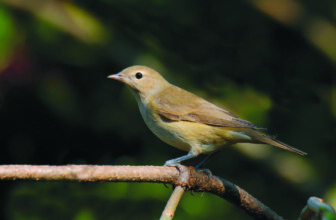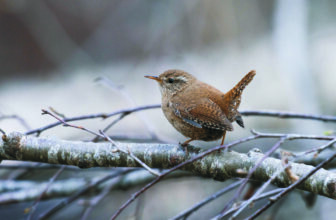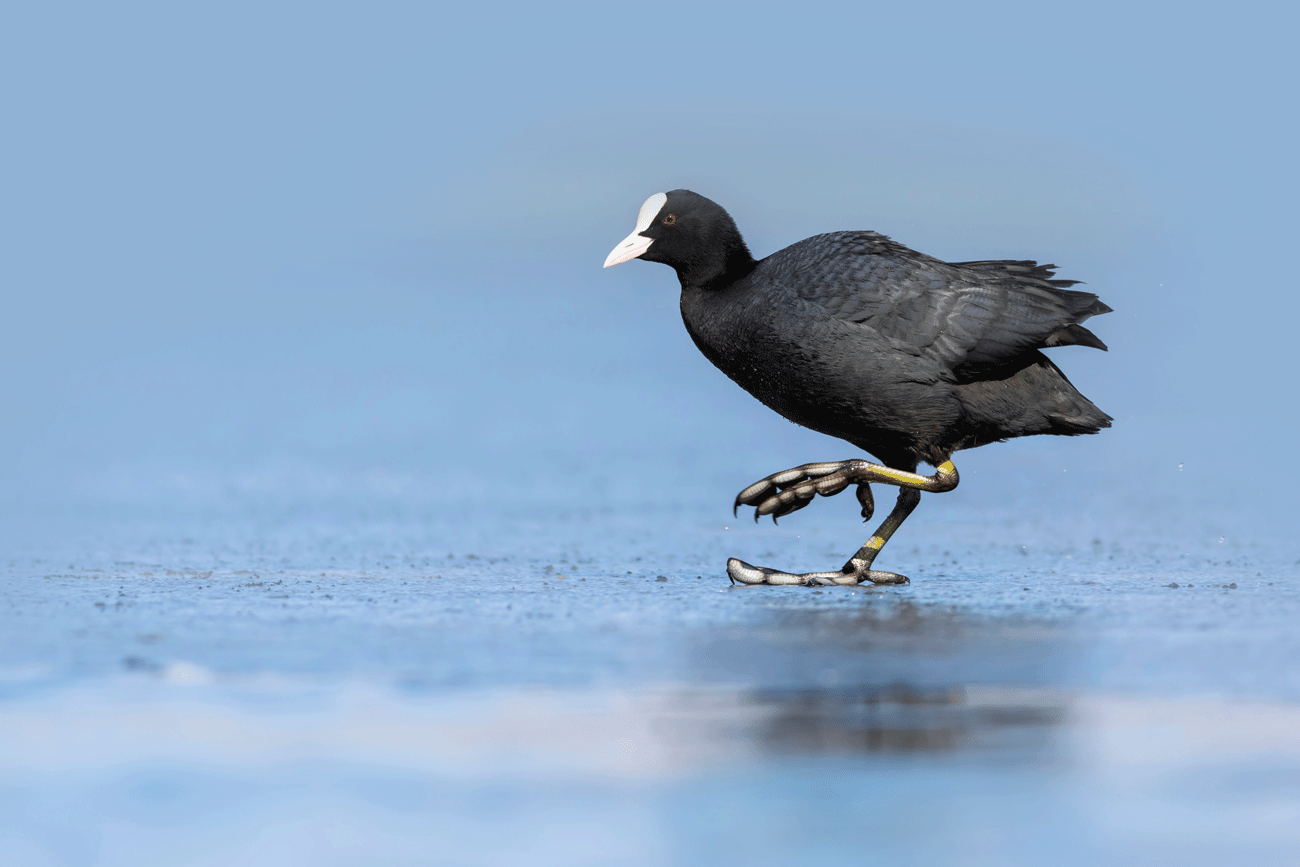
I was walking the dog one night when I heard the squeaky two tone note of a child’s bike horn approaching.
Better watch out, I thought, any kid that young and riding their bike on this footpath is unlikely to have lights.
The next I knew the squeaky toy trumpet sound was behind me and was soon repeated in the distance.
I imagined the rider had gone around me on the grass and I didn’t give it another thought. Until, that is, a year later last April when I was sitting out in the garden on a clear still night.
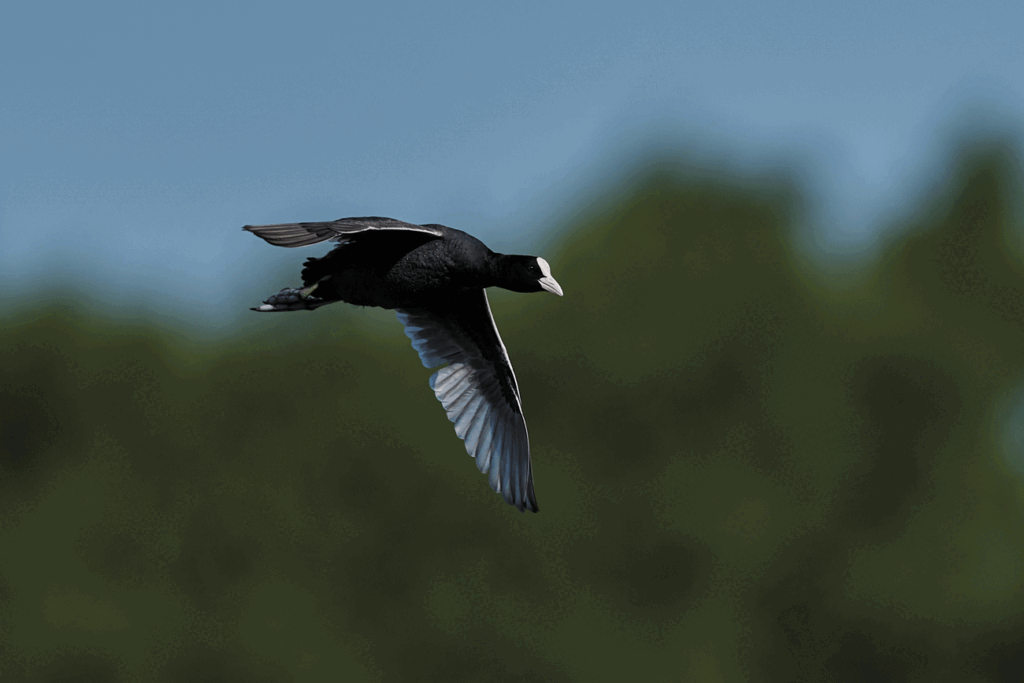
Suddenly I heard that double squeak again but this time it was clearly overhead. A second hoot from further away proved it was a bird flying overhead. But what?
I racked my brains trying to think what sort of night flying migrant it might be but I was stumped until a bit of internet research identified its most unexpected identity. It was a Coot! What a crazy record.
But it was a very welcome one too because it was the 109th bird species I’ve managed to record either in or over my Cranleigh garden during the last 37 years.
I guess most of us would know the sooty coloured Coot if we saw one. But I imagine few have seen one fly for more than a few yards so probably would not have noticed it has a white trailing edge to the inner wings.
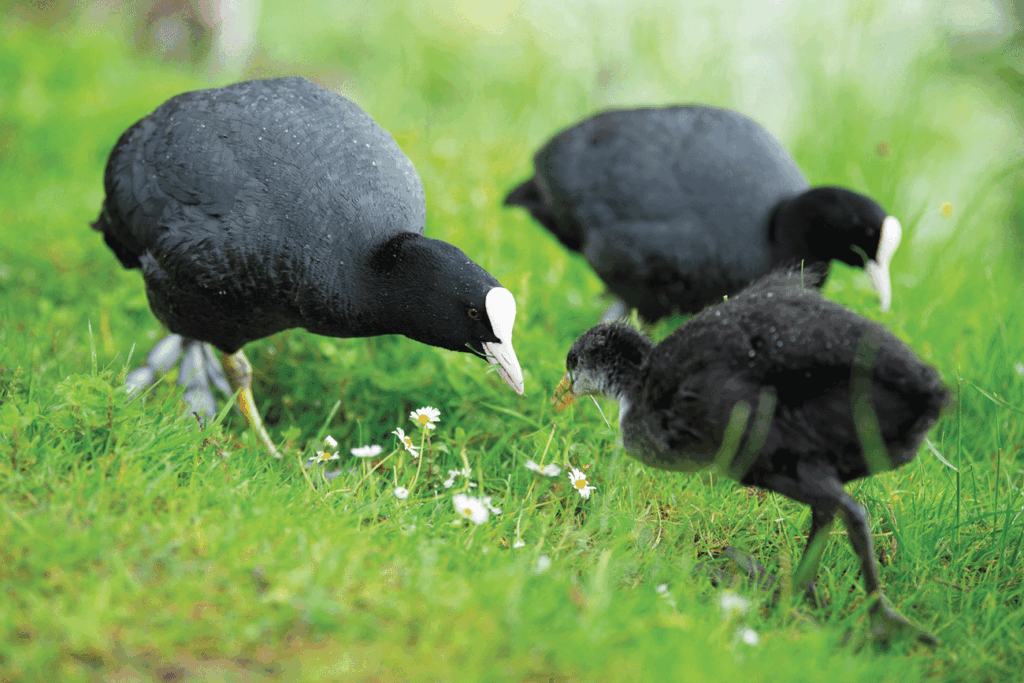
It might come as a surprise for many to know that this water bird is capable of strong flights. Some come from Russia in the winter and others breed here before making for France, Spain or Italy.
Clearly there is more to this bird than meets the eye and while it can be guilty of some weird and aggressive behaviour I don’t think it merits the ‘crazy as a Coot’ tag coined in the 16th century by King Henry VIII’s tutor and poet John Skelton. In one poem he wrote
‘ . . . And also the mad coot,
With a bald face to toot . . .’
Crazy? You decide. They:
* move between countries ahead of seasonal weather changes to ensure they have enough to eat and survive
* carefully construct impressive floating nests from bankside vegetation you’d think would sink
* stay loyal to their partner, for life
* fiercely protect their family from intruders, and
*accept no nonsense from any disrespectful youngster.
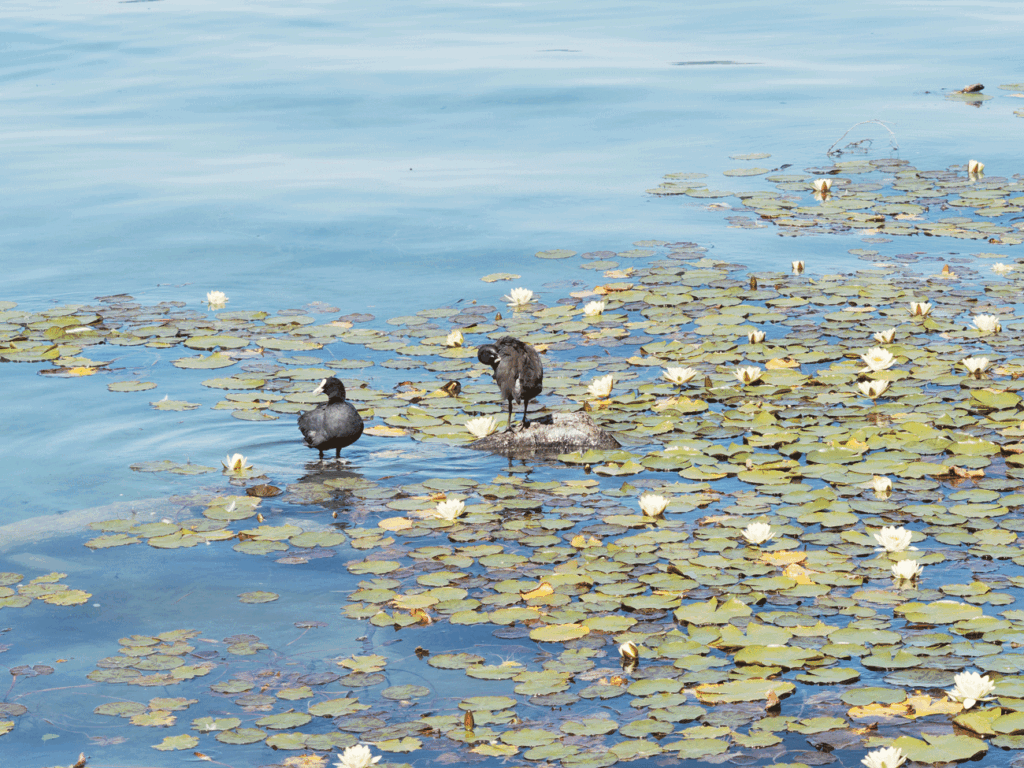
Okay, their multi-lobed feet may look weird but these create the buoyancy they need to walk on flimsy weeds or patter over the water surface to build up enough speed to get airborne. But walking on land is not really for them – it makes them look tipsy.
The adult, red-eyed Coot is not bald either. The phrase ‘bald as a Coot’ is another misnomer because this has been taken to refer to the white featherless shield at the front of its head, which does not even stretch to the back where baldness usually begins to show itself in humans.
‘Bald’ also means ‘streaked or marked with white’ and that has been *offered as the meaning here. Piebald, for instance, is the word used to describe a horse’s black and white markings.
However, immature Coots – little black fluffballs with yellow ruffs – are bald and their bare red heads always look like they’ve had a parent’s severe pecking for wandering off or moaning once too often about still being hungry after a huge meal.
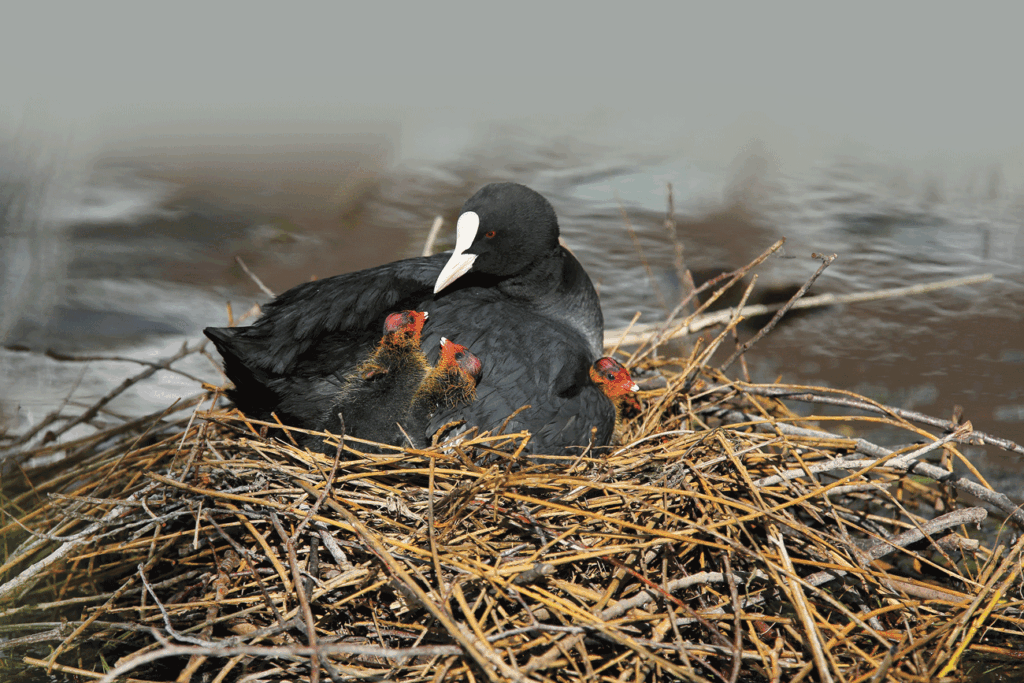
Until now, the few Coots we have around Cranleigh have not been too easy to see for many due to the lack of publicly accessible waters.
But the good news is that the impressive, fast evolving Knowle Park Trust’s lake is attracting increasing numbers of species and Coots were among the first to take up residence in the Spring.
Two pairs have been easily visible and enjoyed by many over the summer as they dived, quarrelled, and bred successfully on the rafts provided.
It will be fascinating to see if the lake attracts bigger numbers of Coots from further afield during the winter.
*Gary Martin, writer and researcher on the origins of phrases and creator of the Phrase Finder website.
by Crane Spotter – X (formerly Twitter) @Crane_Spotter




